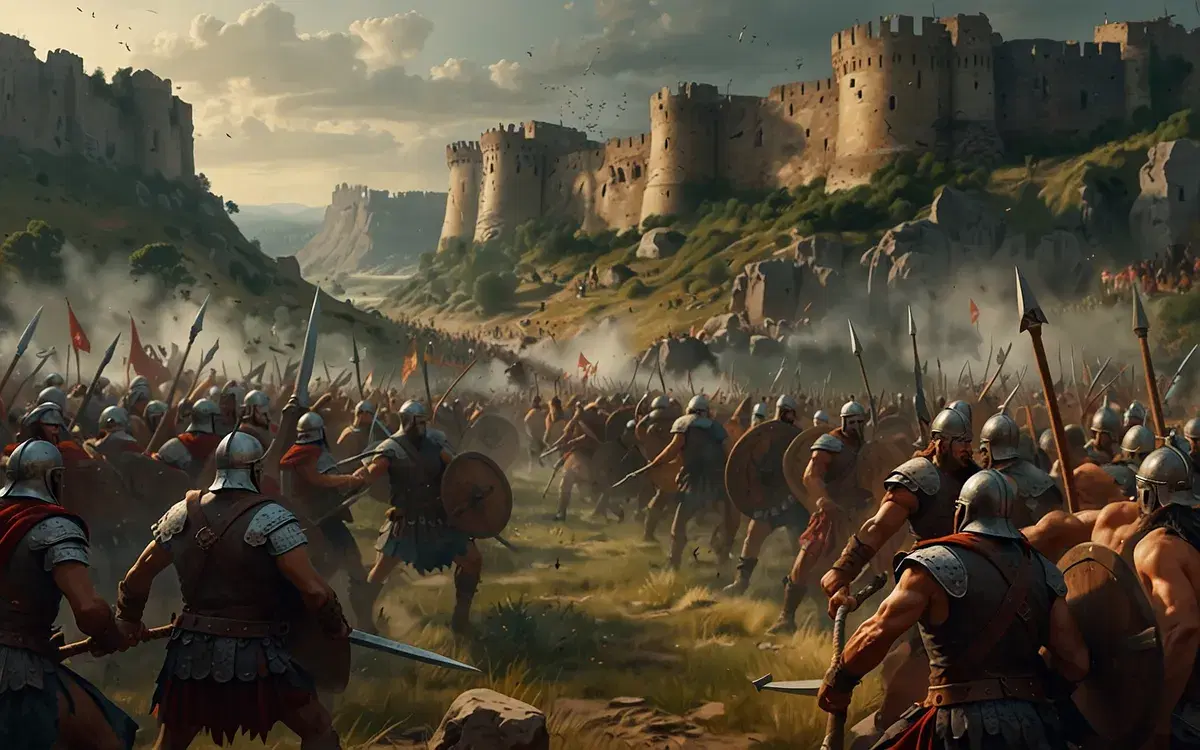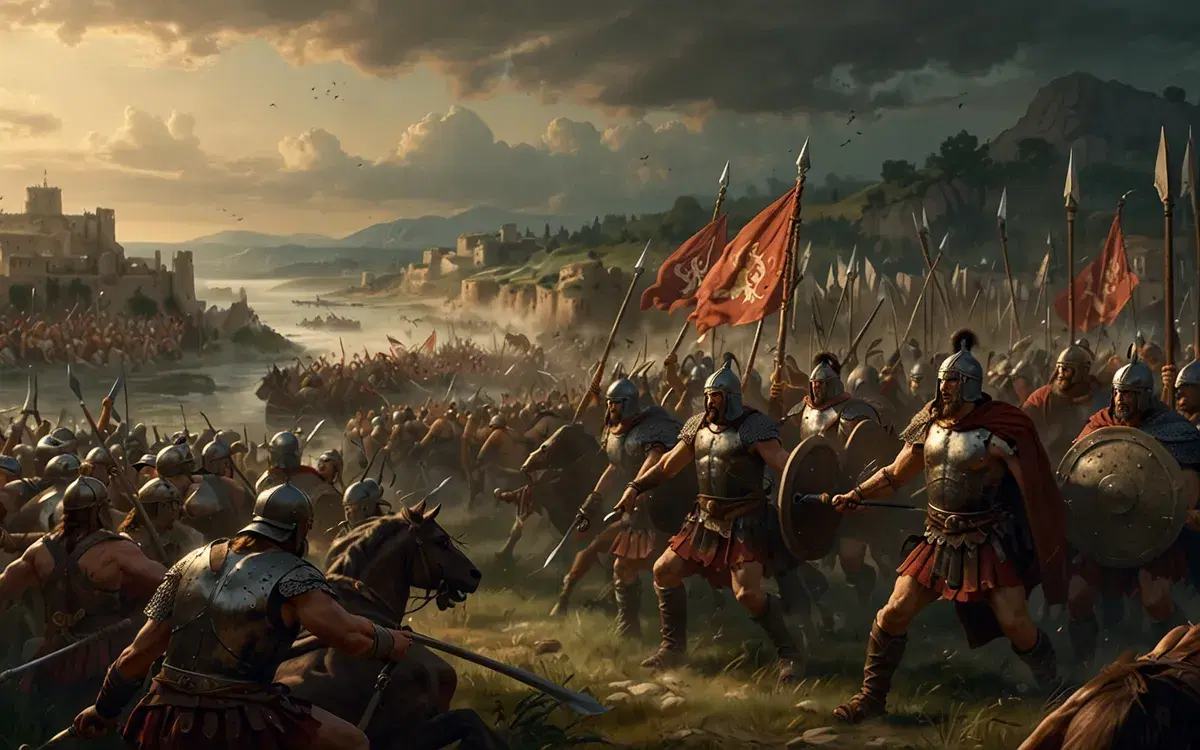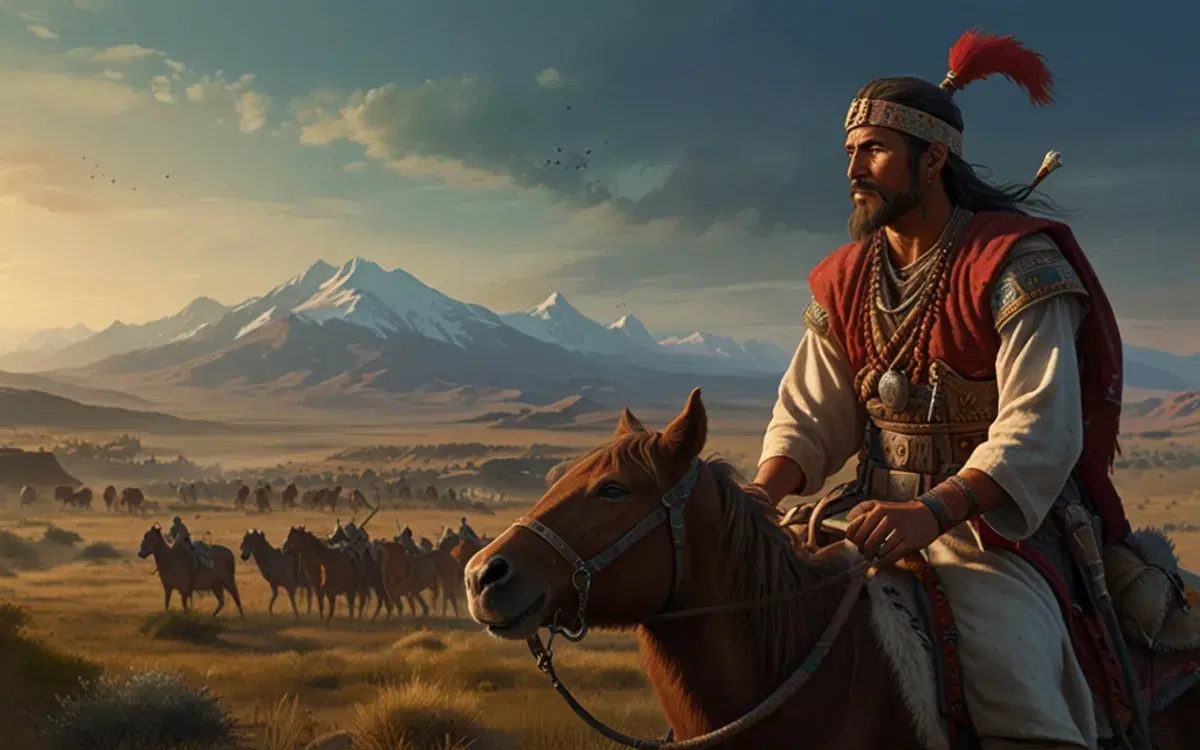Barbarian Invasions and the Fall of Rome: The Rise of Germanic Kingdoms from Alaric to Attila the Hun
The decline and ultimate fall of the Western Roman Empire stands as one of history's most profound and transformative events. It is a story of chaos, migration, and destruction, but also one of renewal and rebirth. This cataclysmic period marked the end of a once-mighty civilization and the beginning of new nations and cultural amalgamations that would shape the modern world. To truly understand this era, we must delve into the migrations, conflicts, and transformations that defined it.

Barbarian Invasions and the Fall of Rome
Western Goths and the Prelude to Collapse
As the Roman legions were recalled from the Empire’s farthest frontiers to protect the heartlands of Italy, the vacuum left behind became an irresistible invitation for Germanic tribes. The West-Goths, or Visigoths, were among the first to capitalize on Rome’s vulnerability. They sought land, wealth, and security, often through violent conquest. Alaric, their leader, famously sacked Rome in 410 AD, sending shockwaves throughout the ancient world. This landmark event not only demonstrated the fragility of Roman authority but also inspired other Germanic tribes to seek their fortunes within the Empire's weakened borders.
Floodgates Open: A Migration Crisis
The Visigoth’s success ignited a chain reaction. Tribes from across Germania began to migrate en masse, driven by hunger, displacement, and the relentless pressure of more aggressive peoples like the Huns. The once-defensible borders of the Roman Empire were overwhelmed. What began as a trickle of migrations became a flood, then a deluge, as wave after wave of peoples—the Vandals, Burgundians, Franks, and others—swept into Roman territory. The empire, unprepared and overstretched, crumbled under the sheer weight of this human tide.
For two centuries, Europe became a cauldron of upheaval. Tribes and armies roamed, pillaging, burning, and destroying. Cities fell, economies collapsed, and millions were displaced. While this era seemed to be one of unending chaos, it laid the groundwork for the medieval world. These migrating peoples unwittingly blended their customs, languages, and governance with Roman traditions, planting the seeds of modern European states and cultures.
Rise of the Vandals: From Spain to Africa
Among the most infamous of these tribes were the Vandals. Originating near the Baltic Sea, they embarked on a long, arduous journey through Gaul into Spain. Driven by conflict and the relentless push of other tribes, they eventually crossed into North Africa at the invitation of a rebellious Roman governor. This fateful crossing of the Strait of Gibraltar led to the establishment of a Vandal kingdom on Roman soil.

Rise of the Vandals
From their capital in Carthage, the Vandals became synonymous with destruction. Their pirate fleets terrorized the Mediterranean, targeting vulnerable coastal settlements for plunder. Their most infamous act came in 455 AD, when they sacked Rome itself. For fourteen days, they looted the city, carrying off immense wealth and destroying priceless works of art. It is from this act of wanton destruction that the term “Vandalism” originates, forever associating their name with senseless ruin.
Burgundians and the Formation of New Kingdoms
While the Vandals wreaked havoc, other Germanic tribes carved out new territories within the remnants of the Roman Empire. The Burgundians, who initially settled along the Rhine, gradually migrated into Gaul, where they established a kingdom in the fertile Rhône Valley. Their legacy endures in the name of the Burgundy region of modern France. Unlike the Vandals, the Burgundians sought a more cooperative relationship with Roman institutions, blending their traditions with local culture. Yet, they never attained the power or influence of some of their contemporaries.
Huns: A Nomadic Threat
Overshadowing even the fearsome Germanic tribes were the Huns. This nomadic group from the Central Asian steppes brought terror wherever they roamed. Under the leadership of Attila, the Huns forged a vast empire stretching from the Volga to the Rhine. Attila, known as the “Scourge of God,” embodied the fears of Roman and barbarian alike. His campaigns left a trail of devastation across the Eastern Roman Empire and into Western Europe.
In 451 AD, Attila's ambitions brought him into conflict with a coalition of Romans and Goths at the Battle of Chalons in Gaul. This epic confrontation marked one of the last united efforts of the Roman world. While the Huns inflicted heavy casualties, they were ultimately forced to retreat. Legends of this battle claim rivers of blood flowed across the battlefield, and its significance lingered in European memory for centuries.

Attila :The Hun
Attila’s death in 453 AD signaled the collapse of the Hunnic Empire. Without his leadership, the Huns fragmented, and their threat to Europe dissipated. Yet, their incursions had already reshaped the continent, driving other tribes deeper into Roman lands and accelerating the empire’s decline.
Final Blow: The Fall of Rome
As the Western Empire faltered under the weight of invasions and internal decay, its leadership became increasingly ineffectual. The year 476 AD marked a symbolic end to the Western Roman Empire. A young emperor, Romulus Augustulus, was deposed by Odoacer, a Germanic chieftain who had risen through the ranks of the Roman army. Odoacer chose not to claim the imperial title but instead sent the imperial insignia to Constantinople, signaling that one emperor was enough for both East and West.
While Odoacer ruled Italy with relative stability, the abdication of Romulus Augustulus represented a watershed moment. For centuries, Rome had been the unifying force of the Western world. Its fall signaled the dawn of a new era: the early Middle Ages. Yet, the transition was not solely one of destruction. Many Roman institutions and cultural practices survived, merging with those of the Germanic kingdoms that replaced them.
A New World Emerges
Although many view the fall of the Western Roman Empire as a tragic and catastrophic event, it was also a time of remarkable transformation. The blending of Roman traditions with those of the Germanic tribes and other cultures laid the groundwork for modern Europe. From this upheaval emerged feudal systems of governance, the establishment of medieval Christianity, and innovative forms of art and literature that would define the coming centuries.
The fall of Rome reminds us that even in times of great upheaval, new possibilities emerge. The chaos of the migrations and invasions gave way to new nations, cultures, and identities. What seemed like the end of the world to contemporaries was, in reality, the beginning of a new chapter in human history—a testament to humanity's resilience and capacity for reinvention.





